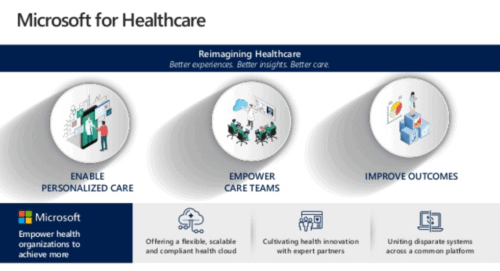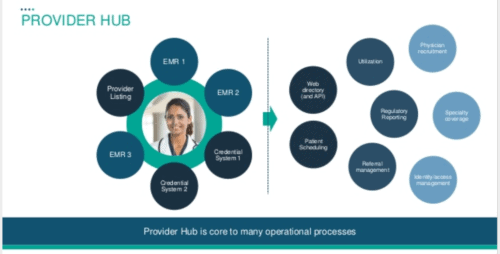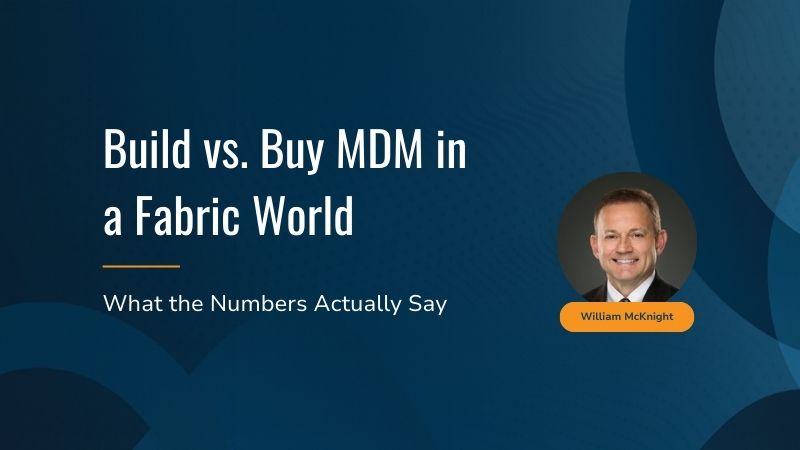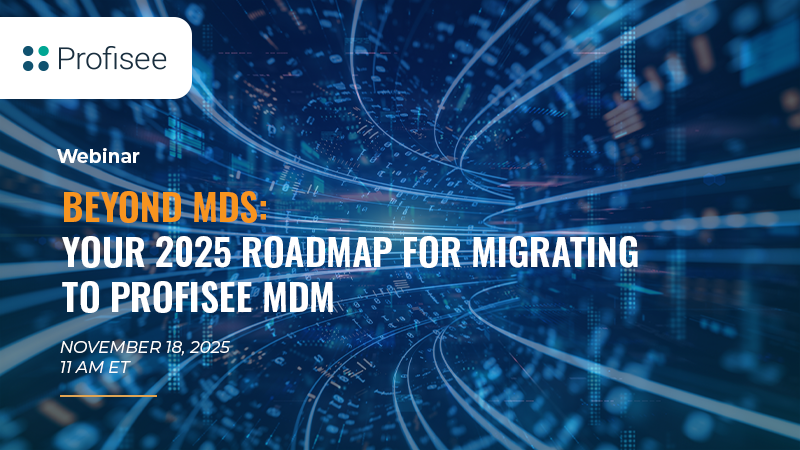The intersection of platform, infrastructure and success driven implementation is the focus for this session on data management for modern healthcare. Read on to see it in real time with Microsoft & Profisee at MD Anderson.
Listen to the Podcast!
Healthcare in 2020 and beyond
The #1 priority in healthcare remains patient care. But as we heard from some of the initiatives in large tech companies like Microsoft that power so many healthcare systems, a required core competency for successful patient outcomes is trusted data management practices. Trusted data allows you to improve healthcare outcomes and drive business efficiency.
John Barto of Microsoft shared their focus on how Microsoft is supporting healthcare systems to achieve more.

They are seeing 5 trends driving intelligent health:
- Rapid emerging technologies
- Aging populations
- Shortage of healthcare workers
- Cyber-security and need to manage data privacy
- Consumerization
Consumers today have so many options. What lies underneath all those options is a foundation of trusted data. This foundation helps you address the demands of healthcare from both a consumer and regulatory perspective. FHIR standards enable broad data sharing, but of course, the question to ask is what state is the data in for sharing?
At Profisee, we see these common areas to include in the healthcare data foundation:
- Provider
- Patient
- Treatment
- Facility/location
- Supplier/supplies
- Reference Data
Many customers begin with the Provider ‘domain’ to address the requirements of a Provider Directory that all healthcare companies must offer including access from other systems. Once the Provider domain is mastered, that trusted data can be used downstream in a variety of different ways including providing a searchable directory, creating key card access to facilities, enabling an emergency system by specialty to roll out on a moment’s notice and a variety of other reporting and analytical needs to improve business efficiency.

Example: Provider hub in Profisee Platform and down stream use
Next, we hear from Mark Wozny at MD Anderson Cancer Center in Houston, TX.
Mark shares how they got started at MD Anderson with MDM and building their trusted data foundation. In their healthcare facility they chose to begin with the Facility/Location domain and master it. They use this facility data for event management, fire monitoring, and call management. When they began, it took them about 4 months to get this up and running. The success they had then translated to the downstream trusted data being able to be used across multiple use cases in only 1-2 weeks.
The next domain they focused on was the Employee domain. What’s unique to MD Anderson is all providers are employees, but they also have a wide variety of other employee types across the organization. This mastered and trusted data was even used most recently to help coordinate and setup telemedicine visits for providers due to the increased need around COVID-19.
MD Anderson has also developed a trusted patient data foundation. This integrates EPIC patient record data along with the tumor registry. In addition, preferred contact method is tracked here so when results and/or different communication strategies are used, patients are only contacted how they prefer. Also, many cancer patients come from other states even for treatment and so over time, it is very easy to lose contact/connection with past patients. MD Anderson deploys an address verification step within their patient data management strategy that helps minimize bad information.
At MD Anderson, donors are a big part of their network. They recently have been in the process of replacing a decades old legacy donor application and used the Profisee Platform to match and merge new, inbound donors against existing donors in the old system as they migrate to the new system.
Supplier management is another area that MD Anderson is managing multiple sources of data. Supplies are ordered through Peoplesoft, distributed through Intellishelf and billed in EPIC. They use Profisee as a 3 part reconciliation piece – is the item chargable, was it purchased off the contract price list, and reconcile inventory coming in through charge codes against the claims going out. In this area next they are looking at price benchmarking and reconciling any differences here to streamline purchasing and business efficiency.
And one of the final ways MD Anderson is using Profisee is for reference data management. Having data definitions, standardized codes as well as supporting all the data mappings for reporting to support the rollout and management of EPIC. At MD Anderson, they are always forward thinking and looking at additional ways to use data to improve patient care.
In summary, we learned:
- Healthcare is demanding
- Consumers demand more
- Regulations demand more
- Revolution, not evolution
- New normal
- Standards such as FHIR is enabling broad data sharing
- Must trust the data before you share it
- MDM becoming a required core competence
- Leading practitioners
- Building trusted data foundation across domains
- Drive business efficiencies & eliminate redundancy
- Standardize clinical data to improve healthcare insight and outcomes
As you continue on your MDM journey in the healthcare space, these are some excellent examples of ways to get started today.
Interested in learning more? Download a full copy of the guide below.

Brigitte Tebow
Brigitte Tebow is a Principal Consultant and nationally recognized advisor on master data management (MDM) and data governance in U.S. healthcare. With more than 20 years of experience, she has guided health systems, payers, ACOs and government agencies in modernizing how they manage and govern data to improve clinical, operational and financial outcomes. An award-winning instructor and international speaker, she is a trusted advisor to senior healthcare data leaders on data strategy, interoperability and modernization.











